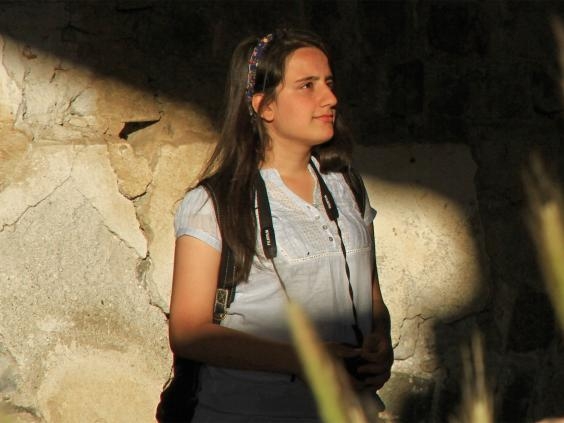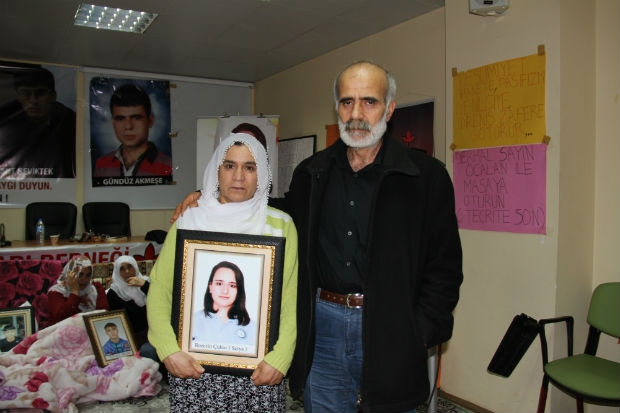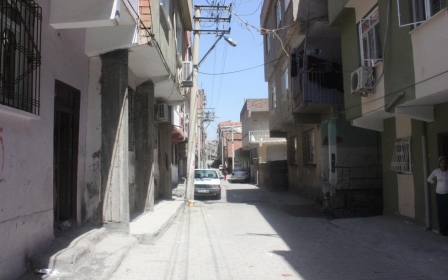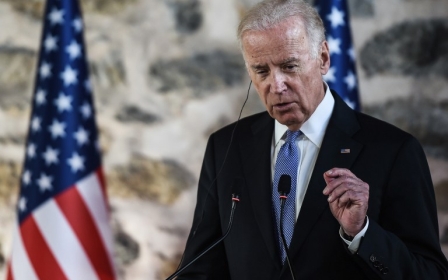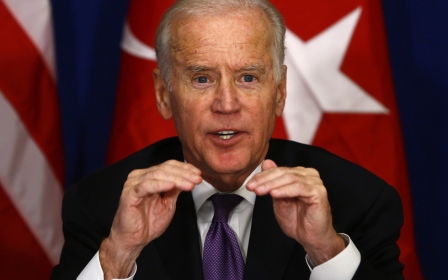Families mourn children caught in crossfire in Turkey's southeast
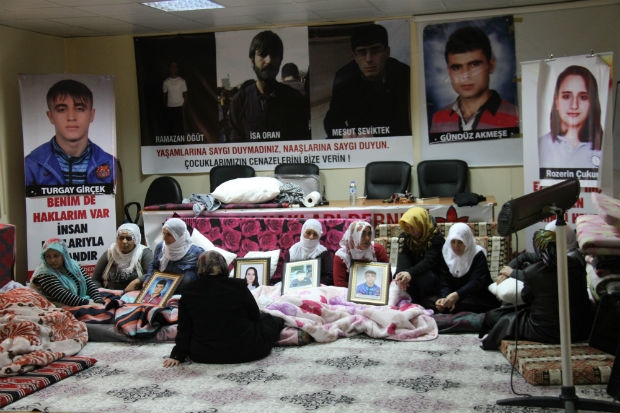
Rozerin Cukur was a 17-year-old Kurdish student from the city of Diyarbakir in Turkey's southeast.
In the 1990s, before Rozerin was born, her family were one of the many hundreds of thousands of Kurds who fled their villages when the guerrilla war between the Kurdish separatist Kurdistan Workers Party (PKK) and the Turkish state broke out.
In recent years, as a ceasefire came into effect between the government and the PKK, the Cukurs were trying to rebuild their village, destroyed during the fighting - and Rozerin had started to write a book about their efforts and the village that had never been her home.
"She had never seen our village, but was always asking questions about it to learn what happened," her father, Mustafa, told Middle East Eye this week.
But in late December, the teenager left to go to a friend's home to study and she never returned home.
More than a week later, her family received a call: their daughter had been killed and her body was lying in a street in the nearby district of Sur where, caught in the middle of ongoing clashes between Kurdish militants and Turkish security services, it has remained ever since.
The 17-year-old is one of 198 civilians that have been killed as a result of fighting in the southeast since August, according to the Human Rights Foundation of Turkey. Many of those killed are young people and are, like Rozerin, from a new generation of Kurds who were born in the cities to former refugee families.
Though many of the youth killed in the southeast are protesters or armed militants, others are simply bystanders.
With continuing sieges, curfews and militant violence, many of their bodies have been left in the streets, with relatives unable to collect them.
As her family found out later, while she was in Sur, the government imposed a curfew, purportedly as a means of cracking down on the PKK’s “youth wing” the Patriotic Revolutionary Youth Movement (YDG-H), which had set up barricades and dug trenches in numerous towns and cities in the southeast.
“She went to her friend’s home to study,” said her father, Mustafa. “When she went, she was holding her notebooks and pencils. She was in her school uniform. I let her go to her friend’s home to study, but I did not know she went to Sur.
“She had a mobile phone. When I heard about the siege, I called my daughter, but she did not answer. Ten to 15 days later, we lost our daughter.”
Rozerin's body is thought to have been lying in the streets since 8 January. No one is sure which side was responsible or how she died.
A brief lifting of the curfew in Sur on 13 January with the intention of removing the bodies of those killed failed, purportedly due to sniper fire.
The Diyarbakir governorate press office told MEE that it could not verify the status of the bodies while the violence was ongoing.
"Everything about the curfew area is just a claim, we cannot enter and we cannot check if the bodies are on the streets or not," it said. "We can say nothing before the terrorists are cleaned from the area. After cleaning, we can give answers."
“The mentality is the same, but the violence is different,” said Mustafa of the current conflict that has claimed their daughter. “For example, in the 1990s, the people were killed in the street, but we could take their bodies. Now, they are boosting our pain.”
On Monday evening, it was reported that another youth, Hakan Aslan, had died in Sur following blood loss sustained after being shot on 22 January.
Several families who lost children in the shooting have staged hunger strikes, demanding the return of their bodies.
One hunger striker, Mehmet Oran, lost his son, Isa Oran, whose body lay on the streets of Sur for 28 days before he could retrieve it.
"They [local authorities] told us that we have to sign an agreement and declare that we are responsible for our own actions if we go the streets that are under curfew and have to take a vehicle to take bodies," he told MEE.
"They told us after that we can take the bodies of our children. They told us that there are snipers and if the snipers kill us, they are not responsible."
Isan Oran's funeral:
Villages destroyed
Such violence is not new to Mustafa or his family. In the 1990s, their village in the countryside of Diyarbakir came under siege from the Turkish military before being destroyed as part of the anti-PKK campaign.
"The day before our village was emptied, it was shot by artillery from 5km away," he said.
"The day of emptying the villages, the special forces came with the village guards of other villages," he said, referring to Kurds who agreed to work for state-sponsored militias that collaborated with the military.
"They put guards on the doors of the houses and forced them to leave the village. If they do not leave, they burn the houses. People left the villages with whatever they could take."
Around 2,000 villages were destroyed by the Turkish state forces in the 1980s and 1990s, ostensibly to prevent them from harbouring PKK militants who would often use rural and mountain villages for shelter and food.
But the demolitions eventually provided propaganda ammunition for the PKK, which claimed that the Turkish government was involved in a programme of ethnic cleansing.
"Until that time, nobody joined the PKK from our village," said Mustafa. "After those pressures began, young people began to join."
The suburb of Fiskaya where Mustafa and his family live is overwhelmingly populated by Kurdish refugees.
Some fled from the violence in the 1990s when the Turkey-PKK conflict reached its peak and as many as 2 million Kurds ended up as refugees, pouring in from demolished villages into big cities like Diyarbakir, Ankara and Istanbul.
Others are more recent - Syrian Kurds fleeing the onslaught of the Islamic State (IS) and their fellow travellers in northern Syria, known to Kurds as Rojava and now heavily dominated by the PKK-linked Democratic Union Party (PYD).
Cyclical violence
Many had hoped - and believed - that the extreme violence that wracked Turkey in earlier decades, claiming over 40,000 lives, would never return to afflict their children.
When the Justice and Development party (AKP) first came to power in 2002 with promises of creating the “New Turkey,” many Kurds were optimistic that the party would signal a change in their fortunes, with the removal of restrictions on language and cultural expression.
But following the breakdown of a two-year ceasefire in July - after a series of bomb attacks mostly targeting Kurdish and left-wing activists - fighting has returned to the streets of southeast Turkey.
“The PKK has been very much bothered by the fact that the state has been going on with, ever since the ceasefire started, what they call ‘preparing for war’," said Diyarbakir-based journalist Frederike Geerdink who was expelled from Turkey in September, accused by a provincial governor of aiding Kurdish militants.
“[The Turkish security services] have been expanding military posts in the southeast of Turkey. They have been expanding military infrastructure. Civilians have died in the southeast, including during the Gezi protests and the domestic security package that was adopted by parliament earlier this year was also not a step towards democratisation."
Though the PKK declared the collapse of the ceasefire in July, the militant group has not been the primary driving force behind the violence that has claimed the lives of hundreds of security officers in Turkey.
The youths that make up the YDG-H and the Civil Protection Units (YPS) - the latter modelled after the People's Protection Units (YPG) in Syria - are thought to be largely operating without direction from the PKK headquarters in Iraq's Qandil mountains and are mainly composed of young Kurdish and leftist activists.
This past weekend, the YPS groups that have now been established in at least eight districts in the southeast announced the formation of a joint coordination to organise their operations.
"During the 93 years since the founding of the Republic of Turkey, many parts of North Kurdistan have faced genocidal military attacks aimed at Kurdish people," read the statement. "These attacks continued heavily during the 20th century, and focused on the expulsion of Kurdish people from their lands over the past 30 years."
Sertac Kayar, a photojournalist who taught Rozerin Chukur in a journalism course, said that what was happening now was a continuation of the cyclical violence that had afflicted Turkey for decades.
"The children of the families who lost their homes in the 1990s have grown up now," he told MEE.
"Children are again being killed now, like in the 1990s. The members of the armed resistance are youngsters from the same neighbourhood."
He was also unequivocal about who was responsible for Rozerin's death.
"The power of the state is in the hands of the government, they are responsible for everything."
Children sacrificed
Amnesty International last week described the Turkish state's actions in the southeast as "collective punishment" and warned of the risk to civilians in residential areas, including in Sur where Rozerin was killed.
Despite the death of Rozerin and the continuing havoc, the Cukur family still remains hopeful that they will be able to continue the work of reconstructing their village and preserving their history.
"We want to go to our village in order to continue rebuilding it," said Mustafa, but added that "the state says it has no funds for rebuilding and we are waiting".
For Mustafa, the pain of losing Rozerin has turned to anger and there is enough blame to spread around.
"All people here blame (Turkish President) Erdogan, Turkey and the government for this," he said. "Yes, this is right, but also the UN and the European Union are to blame for this."
He cited the EU's reliance on Turkey to prevent the flow of refugees to Europe as an example of their appeasement and unwillingness to take action against the Turkish government's operations in the southeast.
"The (EU) states sacrifice our children for their children!" he explained. "They use our children as a barricade to save their children!"
New MEE newsletter: Jerusalem Dispatch
Sign up to get the latest insights and analysis on Israel-Palestine, alongside Turkey Unpacked and other MEE newsletters
Middle East Eye delivers independent and unrivalled coverage and analysis of the Middle East, North Africa and beyond. To learn more about republishing this content and the associated fees, please fill out this form. More about MEE can be found here.


